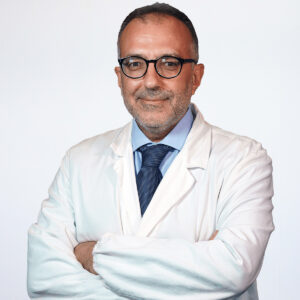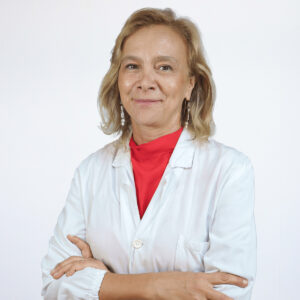The Simple Emergency Unit is part of the UOC of Emergency, Emergency Medicine and General Medicine. It is a Level I DEA and is part of the Spoke-HUB network with San Camillo regarding polytrauma, neurosurgery, vascular surgery and hematology, with the Santo Spirito for STEMI.
Description of the structure
The emergency room has 5 examination rooms: a red room where patients with unstable or time-dependent diseases (STEMI, ICUTS, major Traumas) have direct access, two rooms for codes (2 and 3) and two examination rooms for low priority codes (4 and 5). It also has 7 stations available for patients who are awaiting hospitalization or who need to remain on a stretcher for clinical conditions awaiting examinations and therapies.
Useful information
Access to the Emergency Room can take place:
- for referral by the family doctor or the Medical Guard;
- via 118
- for direct access by the user
Main conditions treated
First aid doctors can deal with any type of pathology or disorder. Among those for which patients, of their own free will or transported by an ambulance, most often go to an emergency room are included:
- chest pains of various origin and nature
- acute cardiac failure
- Pneumonia
- Unstable angina
- anxious symptoms
- heart attacks.
- stroke
- tachycardias and arrhythmias
- Injuries
- digestive haemorrhages
- aortic dissection
- upper airway obstruction
- acute febrile infectious diseases (e.g. flu)
- exanthematous diseases (e.g. chickenpox)
Services provided
Those who go to the Emergency Room access care not on a first-come, first-served basis, but on the basis of the urgency of their case, established through a procedure called "Triage": upon arrival, the patient is welcomed by a professional nurse who carefully evaluates the symptoms and assigns a numerical code according to the guidelines of the Lazio Triage, indicating the level of severity of the problem and therefore the priority of access to the visiting rooms.
Five numeric codes to establish access priority:
🔴 Code 1 highest priority: imminent danger of life. Emergency room doctors intervene immediately, even suspending other ongoing activities;
🟠 Code 2 high priority: potential life-threatening. It is assigned to the patient for whom there is a risk of impairment of an important vital function (respiratory, cardiovascular, neurological). The intervention is guaranteed in a short time;
🔵Code 3 deferrable urgency: attributed to patients who present with stable vital functions, with a low probability of evolution which, however, can lead to a certain level of suffering and relapse on the general condition.
🟢Code 4 waiting: situation of unforeseeable danger to life. The patient needs a medical service that can be performed even after a few hours, without danger to vital functions. He is assisted after the interventions on any codes 1 or 2 present or arriving in the meantime in the Emergency Room;
⚪️ Code 5 long wait: non-severe case, not from the Emergency Room, but for the family doctor or specialist surgeries. The patient is assisted in any case, after the most urgent cases and as far as it is appropriate.
Treatment for red, orange, blue and green codes is free.
Ticket payment is only required for white codes.
THE ACTIVITY OF THE EMERGENCY ROOM IS CHARACTERIZED BY:
- Provide immediate care to the patient in serious condition
- Provide urgent services that cannot be provided by other operators (general practitioners, outpatient clinics, etc.)
- Arrange for admission and decide in which Division
- Ensure secure transportation in case care is needed at another hospital
- Treat the patient and discharge him/her after appropriate therapy if the clinical picture has resolved or does not require urgency/emergency.
THE EMERGENCY ROOM DOES NOT GUARANTEE
- Shortening of waiting times or facilitation of services if not imposed by a significant clinical situation
- Services required as a deferrable urgency for which you must contact the C.U.P.
- Any access considered improper (not urgent) by the doctor on call requires payment of the fee for the service provided (ticket).
The evaluation of the diagnostic-therapeutic path is the responsibility of the doctor on call who, if he deems it appropriate, can make use of the collaboration of the various specialists, for which the waiting times could increase; all the operating staff in the P.S. are informed about the conditions of all the patients present within the service, therefore the possible waiting is configured as an observation period.
Teaching activity
The UOS is part of the training network for specialization schools in Emergency Medicine, Internal Medicine of the Catholic University of the Sacred Heart with tutoring activities.
The Emergency Room is open 24 hours a day


